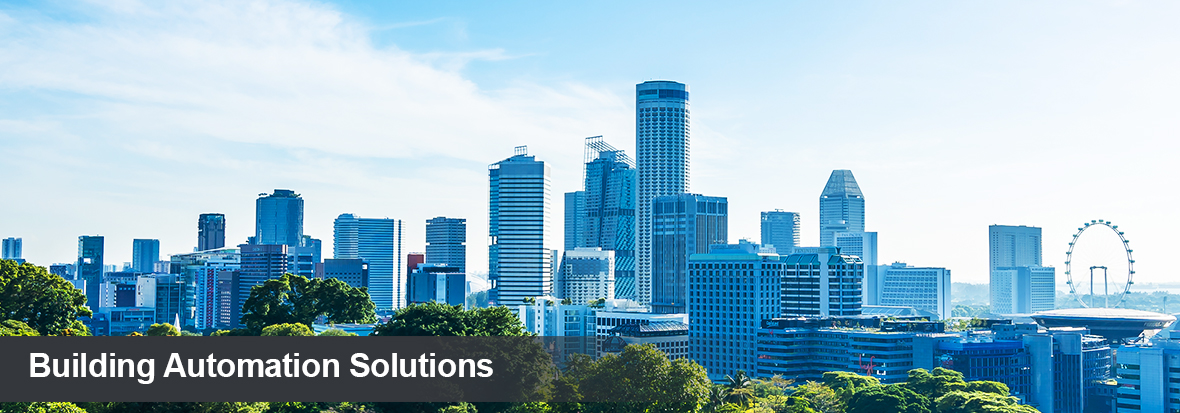With people attaching more importance to environmental sustainability, their awareness of the impact of the environment on human health is rising. The concept of a smart building is no longer limited to the automation of building equipment and systems. Now it entails further digitalization of equipment information to effectively integrate a single management platform’s subsystems. Expanded IoT applications and the popularity of IoT devices in recent years have brought smart buildings to a higher level. A building itself is no longer just a passive space for people’s activities, but an environment to provide safety, comfort, and health.
For the new generation of smart buildings to provide a working or living environment that meets people’s needs, the following five major technologies are indispensable:” would better describe their conditional relationship.
– Precise and accurate user behavior analysis:
Clearly understanding the user’s needs and behaviors is the first step required to turn a building from delivering passive control to actively making a pleasant environment. Sensors all over the building can effectively collect various environmental information and user behaviors such as temperature and humidity, air quality, status of service, illuminance, and carbon dioxide concentration. Understanding the environmental conditions in real time through data analysis can automate adjustment during the operation of building systems or equipment such as air conditioning, lighting, and security systems.
The accuracy of multifunctional sensors and their interaction with users has become the key to improving smart buildings. The sensors do not simply display the measured data on the screen. They upload the collected data to the cloud for further big data analysis through the Internet infrastructure and transform the analysis results into an intelligent control mechanism. The built-in audio or LED display light of the sensors can provide real-time feedback to users for reminders or warnings to ensure user safety and comfort.
– Friendly human-machine interface:
In addition to advanced automation, smart buildings should provide the context in which people can do what they wish according to their immediate usage needs and preferences. For example, when a user enters a conference room, he or she can directly select the desired usage mode—conference, presentation, or standby mode—on a network-capable touch panel. Once a specific mode is selected, it will directly connect with the air-conditioning, lighting, projector, curtains, projection screen, and other equipment in the conference room. The equipment can then be automatically turned on, turned off, or adjusted to achieve the intelligent control of “multi-processing via one screen and multiple controls.”
On the other hand, with software applications (APPs) of mobile phones or wearable devices going to the cloud, users can directly check the current environmental situation and continuously control environmental equipment. The APPs can also assist users in manually adjusting air conditioning, lighting, and more, while at the same time addressing the requirement of remote management of factory affairs, such as monitoring building equipment operating conditions and conducting instant troubleshooting, among other functions.
– Seamless integration of IT and OT (Operational Technology):
When a visitor drives into a building’s parking lot, the access control system first confirms his or her identity. Then following the lighting, the visitor is directed to the parking space reserved for him or her. The system also sends a notice to the person receiving the visitor and automatically turns on the air-conditioning system in the conference room according to the real-time weather conditions prior to the scheduled meeting time. Behind this seamlessly connected scenario are systems for security, access control, conference room booking, parking lot management, office administration, and external real-time weather conditions information or weather stations. They are interconnected to create a more comfortable, convenient, and safer environment for users.
The same scenario of smart building applications also requires cross-communication protocols, full IP network support, and network security mechanisms to ensure the security and interoperability of information transmission to achieve true smart building applications.
– Personalized zone control:
In the new office environment, the fixed layout of a traditional office vs. non-office space is no longer the only way to differentiate both. An office design that emphasizes the integration of humanization, health, and social interaction while featuring flexible adjustment has become mainstream. The same space can be automatically adjusted and managed according to different purposes, such as holding meetings, doing work, or receiving guests. The automation settings, including lighting, air conditioning, and other environmental parameters, such as the number of users, temperature, humidity, and illumination, as well as related equipment, can be controlled intelligently to save energy and improve productivity.
To address this need, the new-type building control system must be able to meet the characteristics of “integrated management and decentralized control.” On the one hand, it provides a building control platform where the owner can easily manage the building; on the other hand, it can meet the different needs of the user and thus improve building operation efficiency and increase user satisfaction.
– Dynamically connected wireless communication static facilities:
Wireless communication technology enables the lighting equipment everywhere in the building to form a network for transmitting control commands and sensory data. Intelligent lighting, a result of luminaires combining the Bluetooth Mesh wireless standard of the Bluetooth Special Interest Group (Bluetooth SIG), allows various applications from simple on/off and dimming settings to customized scene settings and scheduling control. With data collection and sensors further working together, it can send back the details of the relevant sensors for the building management system applications and create a more comfortable environment for the user.
In addition, the Bluetooth Beacon card can be used to locate assets in the building. No matter where they are moved to, users can look up the location of the assets on the information system based on the exclusive addresses and field map data of Bluetooth Mesh luminaires nearby to improve management efficiency. Such intelligent application can be utilized to collect the routing information of shopping carts in retail stores, understand customers’ shopping patterns and preference configurations, and optimize product placement, routing planning, and promotion activities. For the factory and storage space, the luminaire network supported by Bluetooth technology can quickly locate goods and save time in fetching them.
Combining a mobile phone APP navigation interface with Bluetooth technology, hospitals can provide information such as physical check-up station navigation, pricing guidance, and medicine pickup guidance for patients, improving the quality of medical consultation. In office buildings, with existing iBeacon employee cards or related accessories, users can enjoy services such as customizing office spaces, managing meeting rooms, sending reminders of availability, and personalizing office spaces.
Delta’s Building Automation Solutions have applied these five major technologies and applications to create a new generation of people-oriented smart buildings. Click following links to learn more about Delta’s Building Automation Solutions.
Disclaimer: The views and information contained on this blog is for general information purpose only. For further details please contact us at info@deltaelectronicsindia.com

